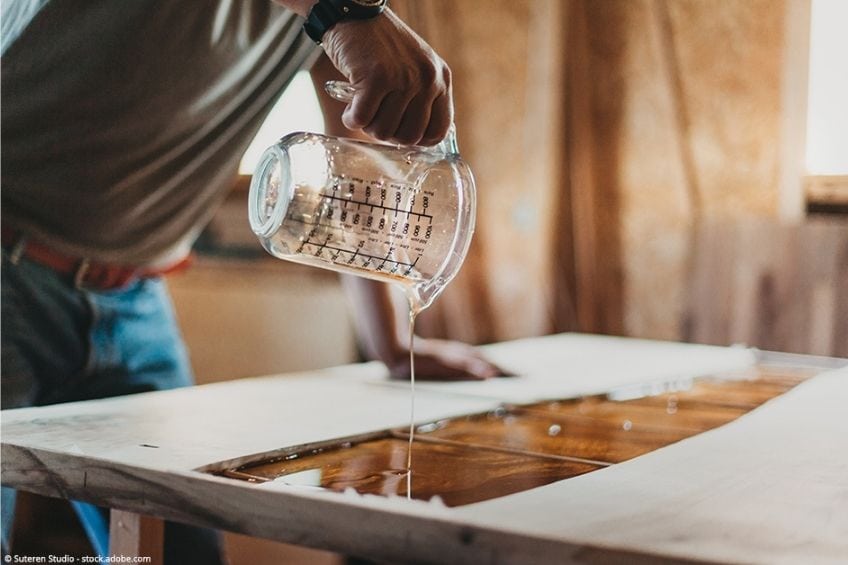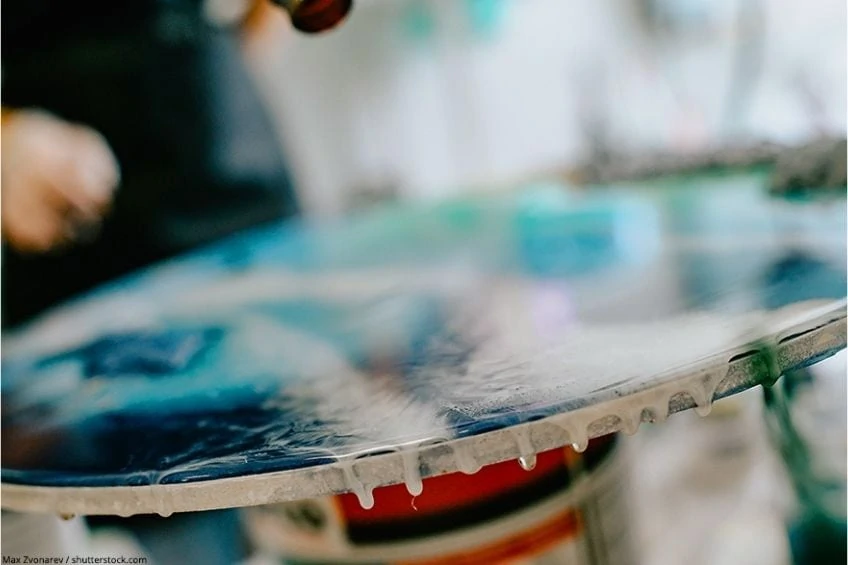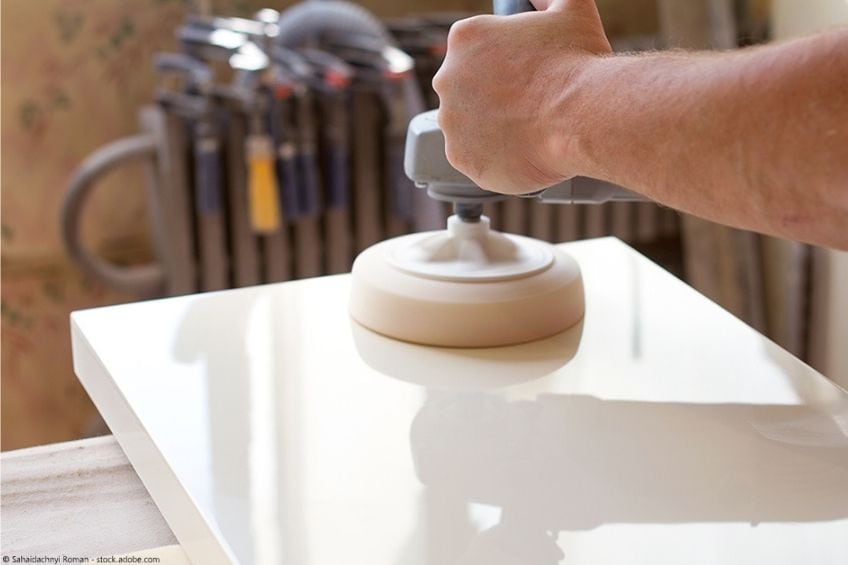Epoxy vs Resin – What is Resin and How to Use it
This post may contain affiliate links. We may earn a small commission from purchases made through them, at no additional cost to you. You help to support resin-expert.com
Epoxy and resin are both adhesives that are commonly used in the construction industry. They are also known as plastic adhesives and are used for bonding plastics, metals, and glass. They can also be used for maintenance and repair, crafting, construction, and so on. These two materials are commonly mistaken for one another due to their similarities, but there are some key differences between the two. In this guide, we will explore the main differences between epoxy and resin, as well as the different uses for these substances.
Table of Contents
Resin and Epoxy
Resin and Epoxy have strong features and durable properties, including things like chemical resistance. You can purchase these adhesives in containers, syringes, packets, and various other forms. On the other hand, resin also comes in different forms which include epoxy coating resin, casting resin, and the likes.
The wrong choice of a resin can lead to extremely bad results because resins have different features. You will find out that some resins require a long time to cure while others require a low viscosity. Applying too much of the thin pouring resin could result in cracking the epoxy because the curing process will be happening too fast. Even so, epoxies have different mixing ratios which are quite complicated at times. While one group has a simple ratio of 1:1, the other group relies on mixing ratios which are more complex.
Types of Resin
The market is flooded with a number of different clear epoxy resins, so choosing the right one for your project can prove to be difficult. However, with proper knowledge of the subject, you will get to know that there are only a few options to choose from. Every clear epoxy resin on the market has been manufactured and modified to fit certain projects, thus leaving only four basic types to choose from. These are as follows:
- Polyurethane Resin: This is more of a synthetic or plastic resin, it is not actual epoxy.
- Epoxy Resin: This is usually found in a 2 part epoxy resin form.
- Epoxy Acrylates: This is a blend that results from the mixing of pure epoxy resin and linking polyester.
- Polyester Resin: This type of resin is known as the unsaturated synthetic resin, thus making it a non-epoxy.
Difference Between Epoxy Coating Resin and Casting Resin
The difference between epoxy coating resin and casting resin is usually seen in their proposed uses. Epoxy coating resin is best known for being a coating for surface areas, whereas coating resin is used for figurines, jewelry, and so on. These two components can be used interchangeably for a number of reasons. This will be discussed in more detail in this article.
Maximum Pouring Depth
A lot of epoxy coating resins have a certain maximum pouring depth requirement of about 1/8 to 1/4 inch on each application. You should not exceed this required maximum pouring depth otherwise you might trigger the curing reaction.
On the other hand, some casting resins can be poured in much thicker layers on every application. This can be as thick as several inches and most suitable for figurines, molds, and in those projects where the wood has been thoroughly soaked into the resin.
The Thickness of the Material
Epoxy coating resins are thicker compared to casting resins. This is because the curing rate for casting resins is very low. The lower curing rate creates low heat thus creating thicker layers. This is why casting resin is not used in coating applications since the resin is much thinner and seeps to the sides of the object. Build a frame around your object to protect it.
Curing Times
Epoxy coating resins have a faster curing time of 12 to 24 hours compared to casting resins which have a curing time of 24 to 48 hours. You are able to touch epoxy coating resins within 20 minutes of curing while it may take at least 18 hours with casting resin.
Casting resins have the ability to have thicker pours which can release heat at a slower rate compared to epoxy coating resins. This means that an epoxy coating resin that is too thick can damage your project since too much heat has the tendency of cracking the epoxy.
Processing Time
The processing time is also known as the working time. This is the time it will take for your epoxy to set or start to gel. Casting resin takes a longer time because it cures at a slow rate. However, epoxy coating resin usually takes about 20 minutes, which is an ideal short time for the whole process to be complete.
The good news is that you can also reduce this working time by trying two methods. You can either do the processing and pouring on a very hot day. Or you can leave the resin in the mixing container for a longer period before you pour it.
Hardness
Coating resins are generally harder than casting resins. The hardness of casting resins is affected by the differences in the mixing ratios. For example, when an inflexible casting resin is added to a vase as artificial water, the result is that the vase might break due to the contraction and expansion of the product.
This is why it is important to alter the flexibility of the casting resin before you use it. You can do this by altering the hardness of the casting resin before it does any damage to your objects. However, you should be cautious when doing these alterations because casting resins vary from manufacturer to manufacturer. Read the manufacturer`s instructions first before you attempt the process the resin. Use a resin that is best suited to your type of project. Do not underdo or overdo the process, always follow instructions. Epoxy coating resin has a higher resistance to scratching compared to casting resin.
Mixing Ratios
Casting resin has a variety of mixing ratios which range from 3:1, 2:1, and 1:1. On the other hand, Epoxy coating resins have a specific mixing ratio of 1:1. This is preferred by most users because it is very easy to work with. If you opt to mix ratios of 3:1 and 2:1, then you have to keep a number of mixing containers so as to increase your resin as required.
Note: You should cautiously measure and mix the ratios correctly so that your epoxy can cure correctly.
UV Resistance
Both epoxy coating resin and casting resin contain effective UV protectors. But even so, when casting resin is used for outside projects it tends to turn yellow when exposed to UV rays. This is due to the thickness of the product. The yellowish can easily be seen if the product is not mixed with paint or stain.
On the other hand, epoxy coating resins hide the yellowing a little better than casting resin. When you use epoxy coating resin with dark-colored stains or paint the yellowish color will not be seen so easily. Always remember that both the casting resin and epoxy coating resin should not be used in places where they are exposed to UV rays, which means they are not recommended for outdoor projects.
Heat Resistance
Most of the epoxy coating resins and casting resins found on the market and used in most DIY projects are not heat resistant. The expensive epoxies are the ones that are heat resistant. Average casting resin or epoxy coating resin starts to soften at about 110 to 150 degrees Fahrenheit.
If you are looking forward to doing your own DIY project with either the casting resin or epoxy coating resin, then you should opt for the expensive option. This will give you a guarantee of not ruining your DIY project.
Possibility of Bubbles
Casting resin forms a lot of bubbles when it is poured into a mixture of embedded items. However, if you use it in thinner layers the bubbles tend to rise to the surface and can easily pop on their own. It is vital to take time in preparing your projects so as to curb this problem of bubbles. If you are going to be using porous materials like wood, then you should seal it first with a thin coat.
The sealing will able to flow into cracks and seal them off. This also goes for areas with corners, or areas that are too complicated to get through. Seal the area first before you start pouring your epoxy. This is because these areas have a tendency of trapping air bubbles.
Other Types of Resin Epoxy
Now that we have exhausted a number of differences between epoxy coating resin and casting resin, we will now look at the other different types of resin epoxy available. The following is a list of some of the products that you can find:
Polyurethane Resin
If you choose polyurethane casting resin for any of your projects, ensure that you check the characteristics of the product first and assess if it’s suitable for your project. It is one of the top-rated resin to use and it offers many advantages.
Pros
- It has a great filling capacity
- The shrinkage is minimal when it cures
- It is suitable for casting and shaping since it is not too thin
- It provides high stability and the material is suitable for thin walls.
- Very easy to process and quick to mix
- You can add additives like filling materials, inhibitors, and so on.
- Safe for electrical encapsulation
- A high rate of heat resistance after curing
- Has a quick hardening time
Cons
- Can form a reaction because it is sensitive to moisture
- The adhesive feature is not really strong compared to Epoxy Resin
- It cannot be welded after being cured
- Harmful to health due to styrene which is emitted during the curing process.
- Requires certain additives to prevent UV rays
Polyester Resin
Polyester resin is most suited for woodworking and some industrial processes. It can be used in the same processes just like epoxy resin. The final results of polyester resin can appear to be similar to epoxy resin, but the two products are not the same.
Pros
- Quite resistant to heat
- Very cheap and lasts longer
- Minimal shrinkage during curing
- Resistant to weather changes
- Resistant to most chemicals and it is also water-resistant
Cons
- Does not easily bond with other substances
- Emits an unpleasant odor
- Not as strong as Epoxy Resin after being cured
- Very difficult to mix with other products
- Very toxic and requires protective clothing when in use
Epoxy Acrylate
Epoxy acrylate is a material that consists of all the characteristics and properties of polyester resin, epoxy acrylic, and epoxy resin. Consider all of these properties and characteristics and assess if they are suitable for your project.
- Epoxy resins and epoxy acrylates have a lot of differences. The main difference is that epoxy acrylates require Ultraviolet Light (UV light) for the curing process. The curing process will not work well at room temperatures or any other heat sources.
- The curing process of epoxy acrylates is quite fast compared to that of epoxy resin. This is an advantage in most projects.
- Epoxy acrylate is much harder and more durable once it has cured compared to epoxy resins.
- Epoxy acrylate has a high rate of resistance to chemicals compared to epoxy resin.
- You can enhance certain characteristics of epoxy acrylates to suit a wide variety of applications and projects.
Frequently Asked Questions
What Does Resin Mean?
Resin is usually used as a synonym for epoxy resin. Resin is used in a wide range of applications – including DIY projects, creating models, art, finishing surfaces, adhesives, and more. Technically, resin refers to a natural product – such as tree sap.
How Can You Process Epoxy Resin?
Epoxy resin feels like a hard plastic after being cured. Epoxy resin can be processed in a variety of ways. These processes include polishing, sanding, and drilling.
Is Epoxy Resin Safe When it Comes in Contact With Food?
Epoxy resin is food safe as long as it has been cured. A few manufacturers obtain safety certificates, but most of them refrain from this process because of the high costs. However, when the resin is still wet, it can have toxic properties.
Is Epoxy Resin Dangerous?
Epoxy Resin is harmless and non-toxic when it has been cured. Nevertheless, direct contact with skin can cause burns and allergies when the resin is still in a liquid state.
Epoxy resin is one of the most popular substances for creating durable finishes or molds and pourings. We hope that this epoxy definition guide has given you a better understanding of epoxy vs resin, and what sets these terms apart. Understanding a good epoxy definition is important to know when choosing what product to use in your DIY project.






